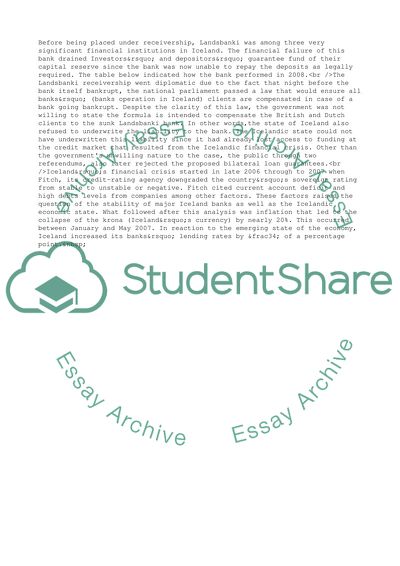Cite this document
(Business Competitive Strategies of the Landsbanki Receivership Case Study Example | Topics and Well Written Essays - 1750 words, n.d.)
Business Competitive Strategies of the Landsbanki Receivership Case Study Example | Topics and Well Written Essays - 1750 words. https://studentshare.org/business/1864715-business-competitive-strategies
Business Competitive Strategies of the Landsbanki Receivership Case Study Example | Topics and Well Written Essays - 1750 words. https://studentshare.org/business/1864715-business-competitive-strategies
(Business Competitive Strategies of the Landsbanki Receivership Case Study Example | Topics and Well Written Essays - 1750 Words)
Business Competitive Strategies of the Landsbanki Receivership Case Study Example | Topics and Well Written Essays - 1750 Words. https://studentshare.org/business/1864715-business-competitive-strategies.
Business Competitive Strategies of the Landsbanki Receivership Case Study Example | Topics and Well Written Essays - 1750 Words. https://studentshare.org/business/1864715-business-competitive-strategies.
“Business Competitive Strategies of the Landsbanki Receivership Case Study Example | Topics and Well Written Essays - 1750 Words”. https://studentshare.org/business/1864715-business-competitive-strategies.


